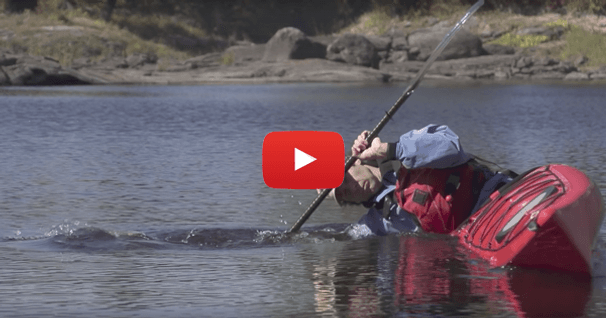Proper Sea Kayaking Technique
One of the great things about kayaking, is that almost anyone can do it. But it's still important to develop and practice good paddling technique, because it will let you paddle the most efficiently, and it will help keep you safer on the water. In particular, poor technique will tire your body much more quickly, and leave you less prepared to deal with changing conditions or dangerous situations. Practicing good technique will also equip you to deal with unexpected and challenging water or weather conditions. So in this video, we're going to look at a few simple ways to improve your paddling technique to make you more comfortable and safer on the water.
How to sit in a kayak
The first thing we're going to look at is the proper sitting position in a kayak. When sitting properly in a touring kayak, it should fit like a comfortable pair of shoes. Your legs should be bent, and splayed out slightly under the thigh hooks. Your feet should be comfortably against the foot pedals, and your back band should be tight enough to promote an upright sitting position, but it shouldn't prevent you from leaning back. This upright sitting position will give you the most control over your boat's edging and will let you rotate your upper body the most effectively, which makes your strokes the most powerful and efficient.
Although the outfitting of any touring kayak can be adjusted, it's important that you start with a boat that's comfortable to begin with. And if you're choosing a kayak, take the time to go to your local retailer and hop into the different kayaks and find one that feels right for you.
How to use your paddle
The next thing that we're going to look at is how to properly use your paddle. The first thing to know about kayak paddles is that some are feathered, and some are unfeathered. Unfeathered paddles have blades that are in line with each other, while feathered paddles have blades that are offset to some degree. The offset of feather paddles is designed to let the upper blade slice through the air and wind more easily when you take a forward stroke. The trade off is that you need to twist the paddle when moving from one stroke to the next.
And so let's take a quick look at the correct way to use a feathered paddle. In most cases, feathered paddles are designed for right-handed people which means your right hand is going to be your control hand. This means that your right hand keeps a firm but relaxed grip on the shaft at all times. Your control hand should grip the paddle anywhere from six to 18 inches from the blade, and your big knuckles should be aligned with the edge of your paddle blade. Your other hand should be holding your paddle at equal distance from the other blade. An easy way to check to see if your hands are in a good position is to lift your paddle onto your head. Your elbows should be bent at around 90 degrees, because this will give you the best mix of control and power.
After taking a stroke with the blade by your control hand, you'll loosen your other hand which is sometimes called the 'greased' hand, so that you can rotate the shaft within it. This rotation is necessary to accommodate the feather or twist of your paddle so that your next blade can be placed squarely in the water. This loosening of the greased hand the rotation of the shaft within it takes place between each stroke. If you're using an unfeathered paddle, you won't need to worry about rotating the shaft between strokes, which is why most people find this more natural.
A last thing to mention is that even though we sometimes refer to the control hand as the 'glue' hand, your grip on the paddle should be secure, but light. A light grip will let you paddle more comfortably for longer, and will help avoid overuse injuries like tendonitis in the wrist. Well, I hope you enjoyed this video and that it makes your time on the water more comfortable.
50 years of lightweight, maneuverable, high-performing kayaks.
Check out this interview with Tom Keane, Eddyline Kayaks Co-Owner, on their journey!
Related Articles
By changing how you edge and balance your boat you can increase your stability and adaptability. Using…
Whether you were new to paddling in 2018 or you're an experienced paddler, you can never stop learning.…
Learn the best way to keep your kayak from capsizing in this episode of PaddleTV. World Champion…
Kyla, my 10-year-old, took position in the stern on our last canoe trip. Her friend, who tagged along,…




